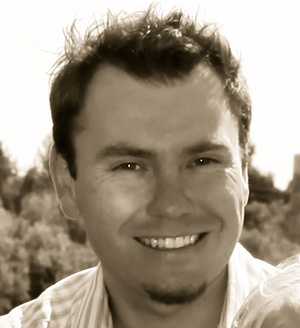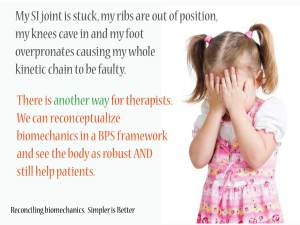Review of Greg Lehman Workshop: Reconciling Biomechanics with Pain Science
A couple weekends ago I attended a new workshop by Greg Lehman on Reconciling Pain Science with Biomechanics. Long story short, this is one of the best workshops I have attended and I think every movement therapist should go. (Quick disclaimer - I spoke at the conference. But that was probably the worst part.)
Short story longer, here are some more details about the workshop.
About Greg
Greg is a triple or perhaps quadruple threat from Toronto – he is a chiropractor, physical therapist, blogger, and researcher (some of his research was done with Stuart McGill.) His knowledge of biomechanics is extensive - pick a subject and he can cite several relevant studies off the top of his head, maybe even one he did himself.
And he is very funny. (The kind of funny, actually, that I think will get him in trouble in the near future if he doesn’t dial it back a bit.)
Getting real about biomechanics
The workshop addresses a difficult problem, which is that the common biomechanical approach to pain treatment has some major flaws right at its center. For example:
- We don’t have a great idea about what movements are best for a particular individual in a particular context.
- Our biomechanical assessments are often unreliable and invalid.
- Our corrections often work for reasons unrelated to actual changes in biomechanics.
- Many common movement and postural "faults" are not correlated with chronic pain.
- Tissue damage is poorly correlated with chronic pain.
- Chronic pain is often more about nervous system sensitivity than tissue damage.
In short, bodies are not cars, and good movement therapy usually doesn't work by correcting alignment. So what does a movement therapist do with this information? How do they “cross the chasm” into an approach that is more in line with the evidence?
I think there are many different answers to this question, and I’m very interested in hearing as many honest and well-informed answers as possible. Greg's workshop presents his answers and they are VERY well-reasoned. Definitely check it out if you can. Until then, here are few random notes I made about the content.
Keeping it simple
It's kind of a bummer that so many of our complex biomechanical assessments are invalid. But there is a bright side - this gives us permission to keep it simple. If we put more focus on what really matters - the fundamentals - we can get better results. Some of Greg's fundamentals are listed in a nice article he wrote here.
The tendon model
Greg thinks the model for treating tendon pain is a good model for treating almost any kind of pain. Successful treatment often doesn’t involve any fancy biomechanical corrections, but simply loading the tissue in the appropriate dosage to cause local adaptations and desensitization.
Changing explanations
Biomechanically oriented therapists don't necessarily need to change what they do. But they should change their explanations for why their treatments work. For example, Greg doesn't believe that McGill's "big three" exercises reduce pain by making the core more stable. But he continues to prescribe them, because he believes they are a great "psychosocial" intervention. If you accept a heavy load through your back in a functional way, and it doesn't hurt, this may reduce perception of threat in the back. Further, if these exercises involve enough stress, they may stimulate local adaptations that could help reduce peripheral sensitivity to nociception.
When do biomechanics matter?
When movement causes pain. If it hurts when you do a movement, then find a different way to move which doesn't cause pain. But don't make too many assumptions about what the solution will look like. Different people are different, and they all have different optimal solutions to movement problems. Greg often finds that he can help someone by getting them to move in a way that is widely considered to be "wrong." This means that his approach to finding movement solutions is creative, playful, interactive and somewhat "shotgun."
Comprehensive capacity
Greg wants his clients to be able to "do everything" - not just the "right" thing. For example, if his client has some knee problems, he might have them work on their single leg quarter squat. But this won't be limited to just making sure that the knee tracks over the middle toe. He will also make sure the knee can move to the inside and outside of the toe, forward and back, etc.
Greg also showed how he might work with someone in a bird dog position. Instead of making sure that they do the exercise with "perfect" form, he has them do it in every different way he can imagine – with more and less lordosis, with level and uneven hips, etc.
This reminds me of Feldenkrais – there is playful and curious exploration of lots of different movement choices, with far less emphasis on distinguishing right movements from wrong movements. This approach also fits in well with the growing research showing that movement variability is probably more important than movement optimality.
The end goal – making clients robust and strong
Everything we do as therapists should give clients the perception that they are robust, strong and adaptable. One of the big problems with the classic biomechanical approach is that it can do the exact opposite - make clients think they are weak, fragile and broken.


